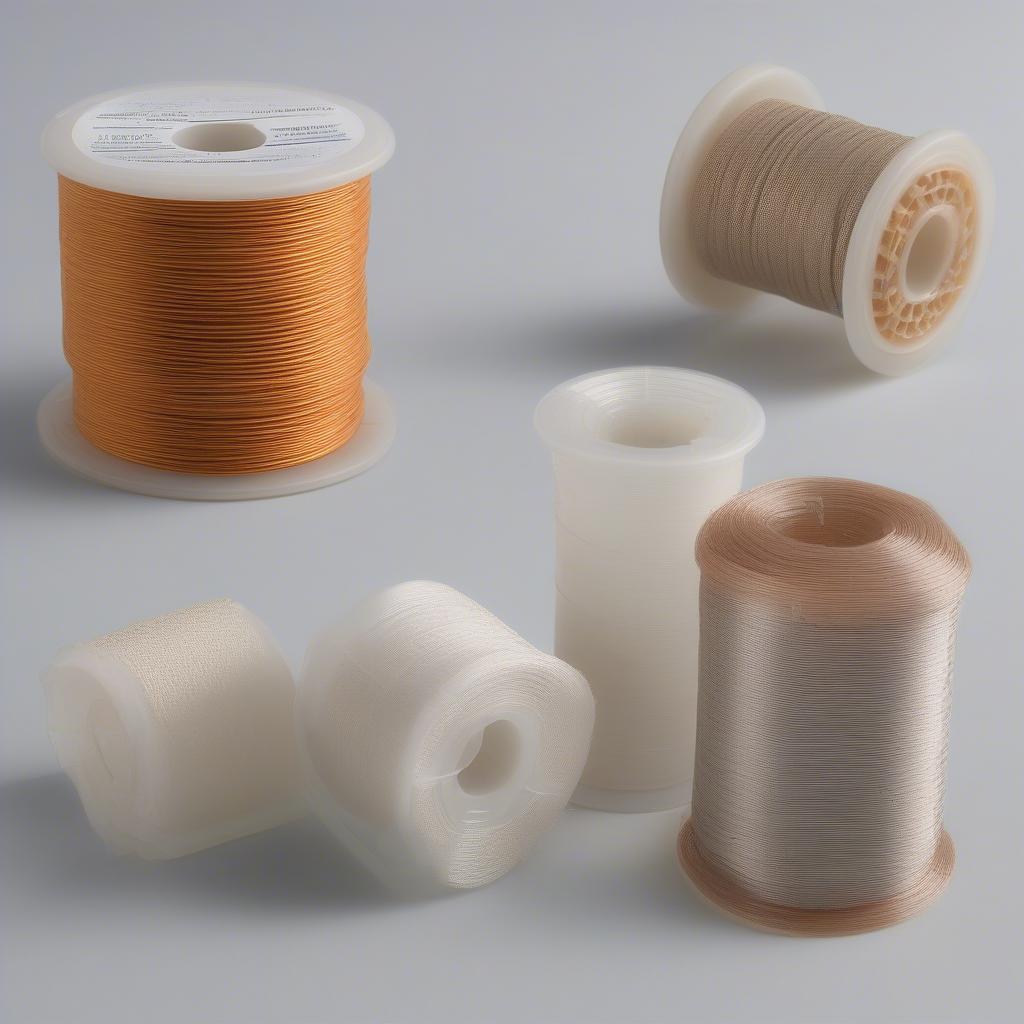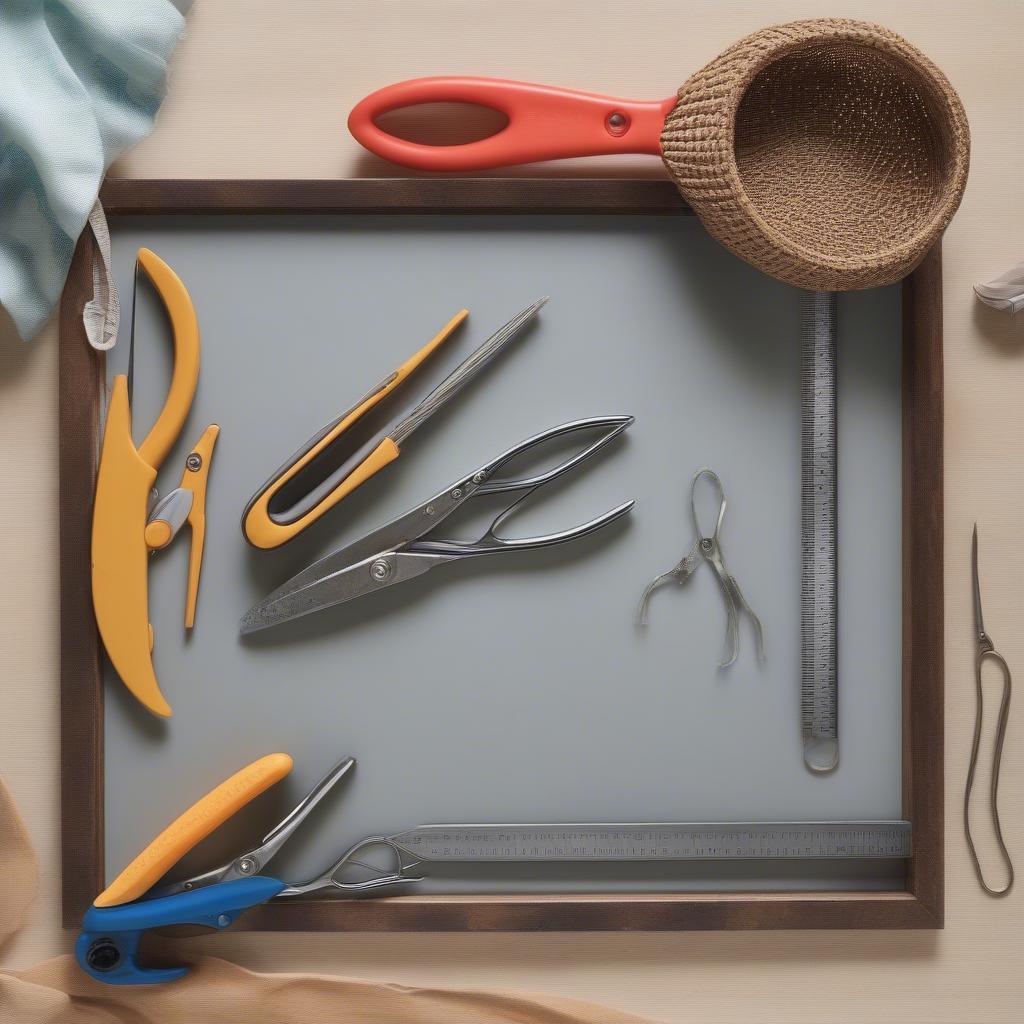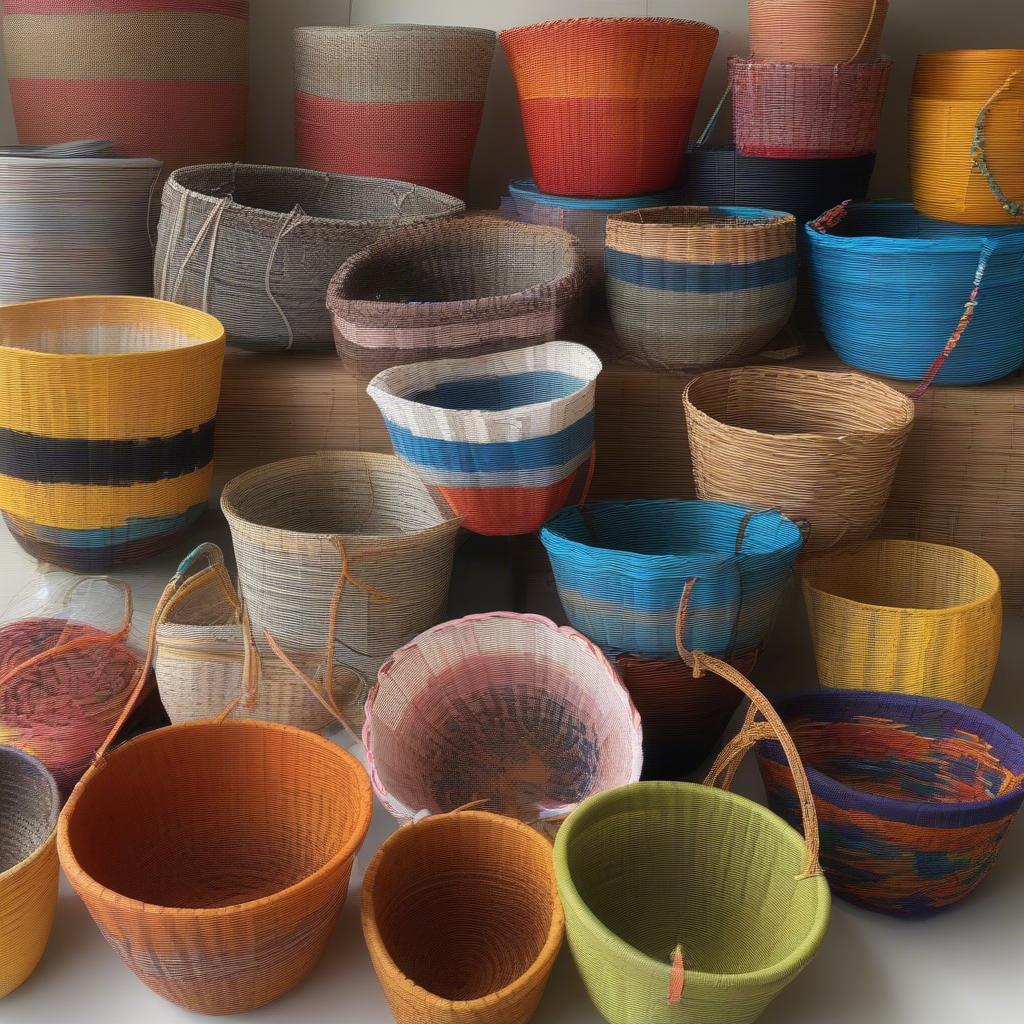Basket Weaving
Master the Art of Basket Weaving with Plastic Wire
Basket Weaving With Plastic Wire offers a modern twist on a traditional craft. It’s a versatile technique that allows you to create durable and colorful baskets, perfect for storage, decoration, or even gifting. This guide will equip you with everything you need to know to get started, from choosing the right materials to mastering essential weaving patterns. plastic wire for basket weaving
Choosing the Right Plastic Wire for Your Project
Selecting the appropriate plastic wire is crucial for a successful basket weaving project. Consider the desired size, shape, and function of your basket when choosing your wire. Thicker wire creates sturdier baskets suitable for heavier items, while thinner wire offers flexibility and intricacy for decorative pieces. A variety of colors are available, allowing you to customize your creations to match your personal style or home decor.
What are the different types of plastic wire? Well, you can find solid core wire, perfect for beginners due to its stiffness and ease of manipulation. Hollow core wire, while slightly more challenging, offers a lighter finished product. And then there’s textured wire, which adds a unique tactile dimension to your basket.
 Different Types of Plastic Wire for Basket Weaving
Different Types of Plastic Wire for Basket Weaving
Essential Tools for Plastic Wire Basket Weaving
Besides the plastic wire, you’ll need a few essential tools to make your basket weaving journey smoother. These include:
- Scissors: Sharp scissors are crucial for clean cuts and preventing frayed wire ends.
- Pliers: Needle-nose pliers are helpful for bending and shaping the wire, especially for intricate designs.
- Ruler or Tape Measure: For precise measurements and ensuring consistent sizing.
- Wire Cutter: A dedicated wire cutter makes cleaner cuts than scissors, especially with thicker gauges.
Having the right tools can significantly improve the quality and efficiency of your weaving.
 Essential Tools for Plastic Wire Basket Weaving
Essential Tools for Plastic Wire Basket Weaving
Basic Basket Weaving Techniques with Plastic Wire
Learning a few fundamental techniques will lay the groundwork for creating a variety of basket styles. plastic wire basket weaving tutorial provides step-by-step instructions for beginners.
The Coiling Method
This method involves wrapping wire around a core, creating a sturdy and circular base. It’s a popular technique for beginners.
The Weaving Method
This technique uses an over-under pattern to interlace the plastic wire, creating a woven fabric-like structure. It allows for more complex designs.
The Twining Method
Twining involves twisting pairs of wires around a core, creating a textured and visually appealing surface. This method is often used for decorative details.
Exploring Plastic Wire Basket Weaving Patterns
Once you’ve mastered the basic techniques, you can explore a variety of patterns to add visual interest to your baskets. plastic wire basket weaving patterns offers a collection of inspiring designs. From simple checkerboard patterns to intricate geometric motifs, the possibilities are endless.
How can I add a personal touch to my basket? Incorporating different colors, beads, or even recycled materials like fabric scraps can elevate your basket from simple storage to a unique piece of art.
 Different Basket Weaving Patterns with Plastic Wire
Different Basket Weaving Patterns with Plastic Wire
Traditional and Modern Applications of Plastic Wire Basket Weaving
While plastic wire is a modern material, the art of basket weaving itself has deep roots in many cultures. traditional plastic wire basket weaving explores this connection. Basket weaving with plastic wire offers a contemporary take on this ancient craft, combining traditional techniques with modern materials. From functional storage solutions to intricate wall art, plastic wire baskets can add a touch of handcrafted charm to any space.
Conclusion
Basket weaving with plastic wire offers a fulfilling and creative outlet. From choosing the right materials and tools to mastering various techniques and patterns, this journey is filled with opportunities for learning and experimentation. With practice and patience, you can create beautiful and durable baskets that showcase your unique style. So, grab your plastic wire and start weaving!
FAQ
- What type of plastic wire is best for beginners? Solid core plastic wire is recommended for beginners due to its stiffness and ease of handling.
- Where can I find plastic wire for basket weaving? Craft stores, online retailers, and even some hardware stores carry plastic wire suitable for basket weaving.
- Can I use recycled plastic for basket weaving? Yes, you can experiment with recycled plastic, such as plastic bags or packaging, but ensure it’s clean and flexible enough for weaving.
- What is the most basic basket weaving technique? The coiling method is considered the most basic and beginner-friendly technique.
- How long does it take to weave a basket with plastic wire? The time required depends on the size, complexity, and your experience level. A small, simple basket might take a few hours, while larger or more intricate projects could take several days.
- Is plastic wire basket weaving environmentally friendly? While plastic isn’t biodegradable, using recycled plastic and creating durable, long-lasting baskets can minimize environmental impact.
- Where can I find inspiration for plastic wire basket weaving patterns? Online tutorials, books, and even observing traditional woven baskets can provide inspiration for patterns.
Do you have other questions about basket weaving, like “plastic wire basket weaving in telugu”? Check out plastic wire basket weaving in telugu for more information.
For any assistance, contact us at Hanoi, Vietnam or Tech Avenue, Suite 12, San Francisco, CA 94105, USA. We have a 24/7 customer service team.
